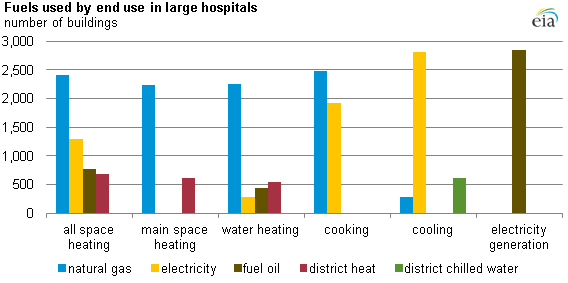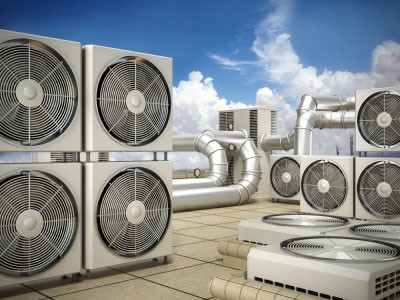Introduction
Energy consumption in hospitals is witnessed in bulk as they are the centers that operate continuously without fail. Hospitals consume energy in various ways to provide different services. With such large energy consumption background, they are the centers possessing great potential for energy savings. An estimate is made that countries like Germany and Netherlands can save energy up to 20% and 44% respectively if their hospitals become energy efficient (Energy Efficiency in Hospitals, 2016).

About 10% of basic energy savings are frequently achievable in a single year (for which no extraordinary spending plan ought to be required). Contingent upon the energy practices of a hospital, a basic walk-through examination may uncover territories where lighting, hardware and so forth are left on, when unattended, or where lighting, ventilation or other administration levels can be decreased without hampering comfort or medicinal services.
It is essential to set up an energy management program along with the appointment of an energy manager to ensure the smooth implementation of an energy efficiency system. A well-supervised energy management program helps the authorities enhance their decision-making process, attain apposite feedback from already employed measures and paves the way for applying new measures (Guidelines for energy efficiency in hospitals, 2007).
Energy Consumption Appliances
The two most widely used non-renewable resources used by hospitals to operate their systems are fuel and electricity. Fuel is mostly utilized for space warming and to deliver domestic boiling hot water, while the two noteworthy applications for power are seen as lighting and ventilation. These applications may speak to about 75% of a hospital’s aggregate energy utilization. Warmth is to heat up a space and household hot water is regularly the biggest application, at any rate in nations with chilly (generally northern) temperatures. Energy used to give warmth can be of thermal or electrical root although, for most nations, thermal energy is prevalent. Heating is nearly trailed by power utilized for lighting and ventilation. These two applications together frequently represent 50-60% of the aggregate electrical energy utilization.

Fig.1 Energy consumed in large hospitals (U.S. Energy Information Administration, 2007)
Energy efficiency in HVAC segments
Clinics can spare energy and cash by upgrading HVAC to powerful, vitality proficient advancements and practices which help in diminishing HVAC-related vitality costs while improving contamination control. Choices regarding the HVAC framework—for new development and existing structures—are best when embraced as a feature of an office-wide energy administration program. HVAC can represent almost 50% of a hospital’s aggregate energy use (Taddonio, 2011). Doctor’s facilities ought to plan and perform consistent support on key HVAC segments to recognize open doors for vitality effectiveness enhancements and redesigns.
Fans
For non-basic spaces with lower ventilation necessities, for example, therapeutic office floors, switching to a variable air volume framework by introducing variable recurrence drives on all engines. Variable frameworks adjusted the wind current given the requests of the space being served, diminishing force use in fans by as much as 50 percent.
- Right-measuring is critical for energy productivity. Properly estimate fans so genuine operation corresponds with ideal productivity focuses on fan bends given real weight drop and stream rate.
- Move up to energy proficient engines. An NEMA-evaluated premium effectiveness engine is 2 to 9 percent more proficient than a pre-EPAct 2005 standard engine and 1 to 3 percent more productive than more up to date standard engines (McCoy, 2014). A 1 percent proficiency change on another standard 100 hp engine serving a day in and day out HVAC framework and working at 75 percent burden could lessen the hospital’s energy use by around 5,000kWh every year (McCoy, 2014).

Loops and Channels
- Perform reliable operations and upkeep capacities to minimize weight drops over the loops and channels; basically, keeping the curls and channels clean can significantly enhance the effectiveness of the whole HVAC framework.
- Think about including as loops sidestep both the warming and cooling curls. At the point when the loop is not in operation, a detour damper will open, considering the air to go through with a generously bring down weight drop (Bonnema, Studer, Parker, Pless, & Torcellini, 2010). This can lessen fan vitality essentially.
- The increment of channel cross-sectional range (calculated channel packs, created channels) to give more energy proficient filtration.
Dampers and Channels
- Check legitimate damper operation frequently. Clean and repair dampers as required (Taddonio, 2011).
Controls
- Align, check, and alter indoor regulators to precisely heat and cool distinctive building zones.
- Rectify any HVAC frameworks in the struggle by warming and cooling a territory all the while.
- Decrease HVAC use when territories are vacant or low in operation (and in this manner are liable to bring down indoor air quality and temperature necessities). This should be possible by utilizing vitality effective planning—including misfortunes, weekend settings, ideal begin stop settings, and temperature resets in view of outside conditions (Taddonio, 2011). Such settings are especially important in working rooms because working rooms don’t always have to keep up the perfect temperatures required amid surgeries.
Significant Remodels and Developments
When undertaking new development, or significant remodels or extensions of the HVAC framework, a hospital’s advantage is by utilizing an entire building framework outline approach.
- Advance the HVAC framework after burden decreasing methodologies have been actualized. This is because retrofitting offices for energy effectiveness—updating lighting and windows, for instance—will influence warming and cooling necessities.
- Evaluate wind current necessities for various doctors’ facility areas. Decreasing utilization of 100 percent outside air in non-restorative spaces (i.e., workplaces and capacity zones) can bring about considerable investment funds on development and operation costs (Guidelines for energy efficiency in hospitals, 2007).
- Think about utilizing as a dislodging ventilation framework as opposed to conventional overhead ventilation. Such frameworks might enhance both energy proficiency and contamination control.
Source: Sharibkhan Maradukhel












